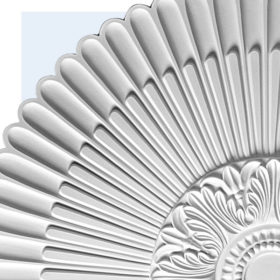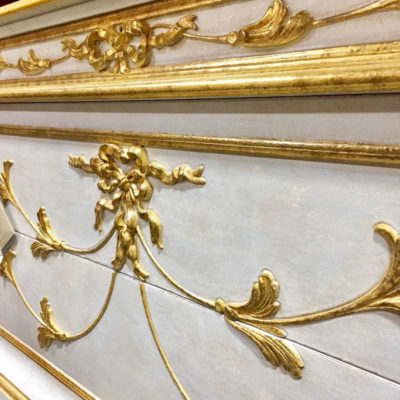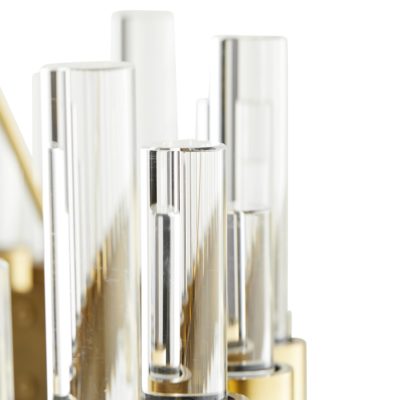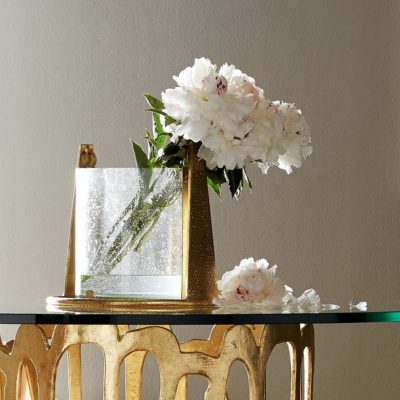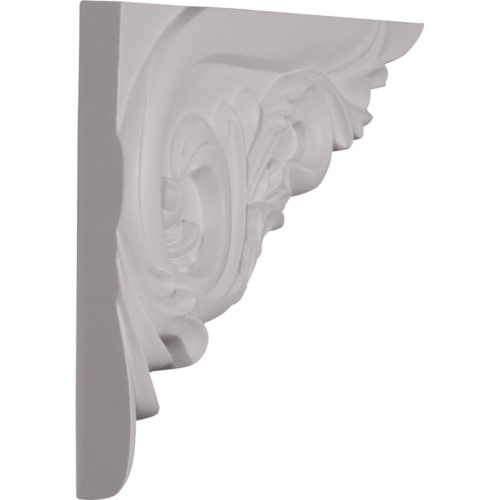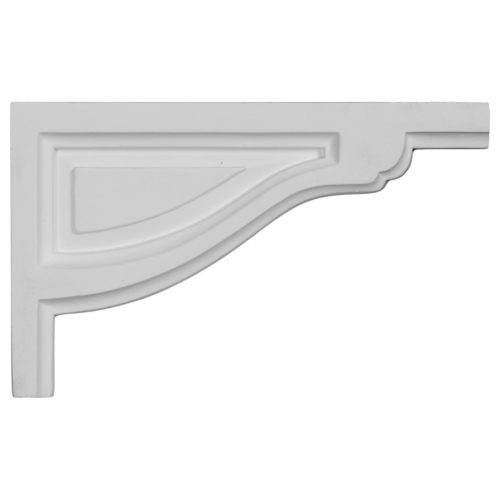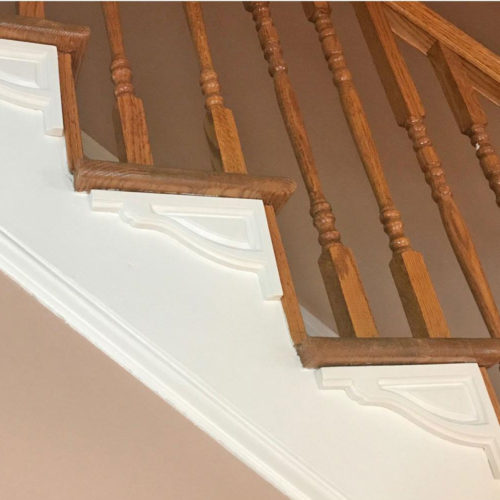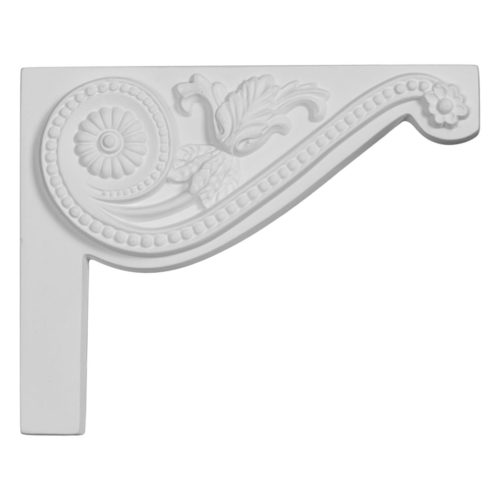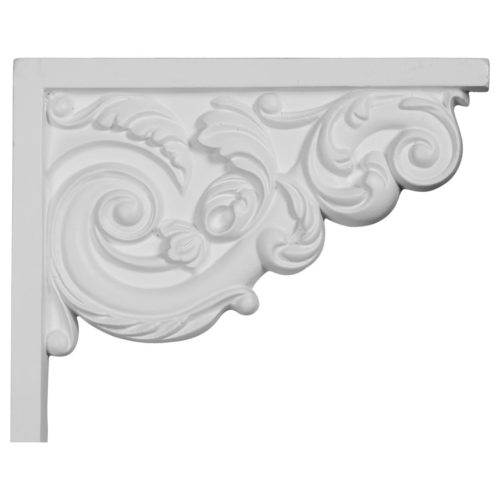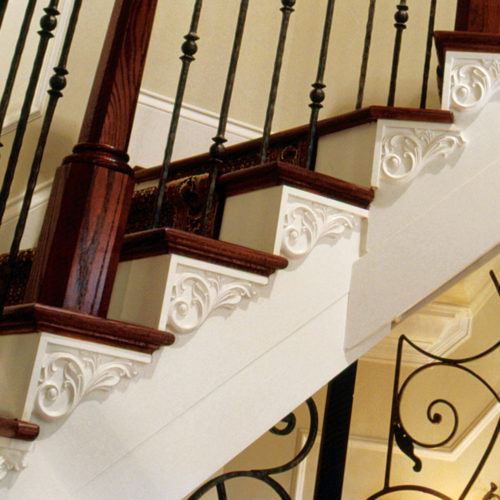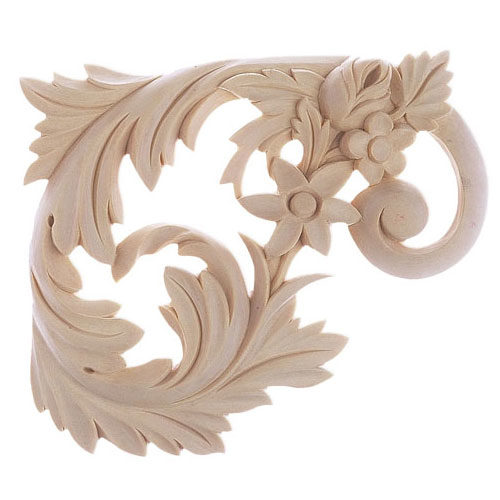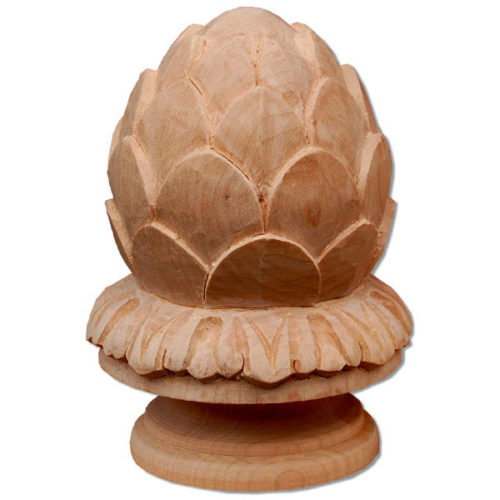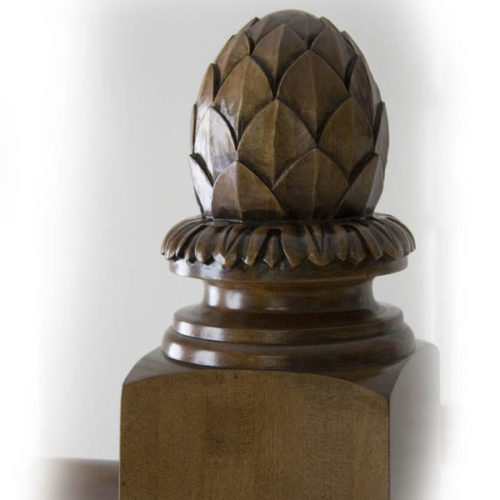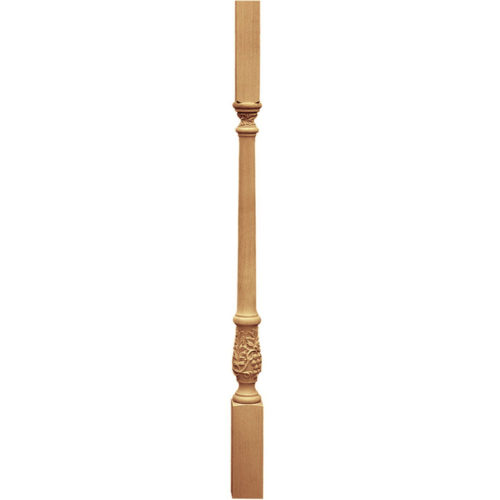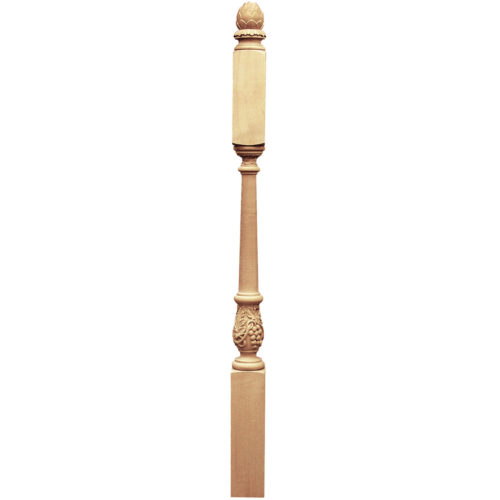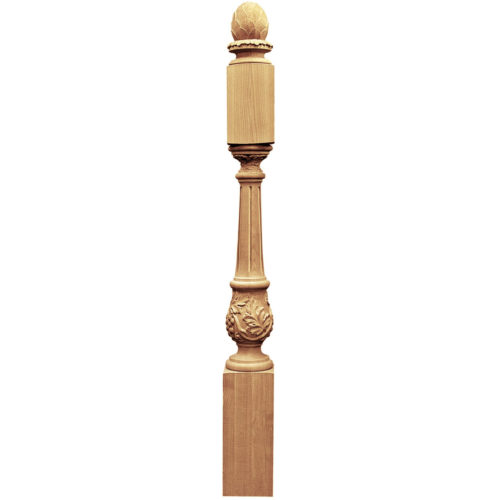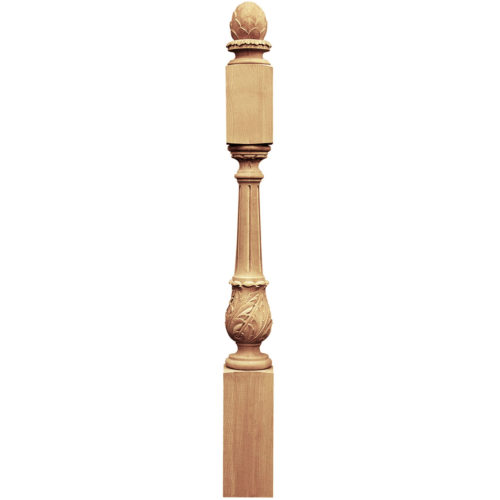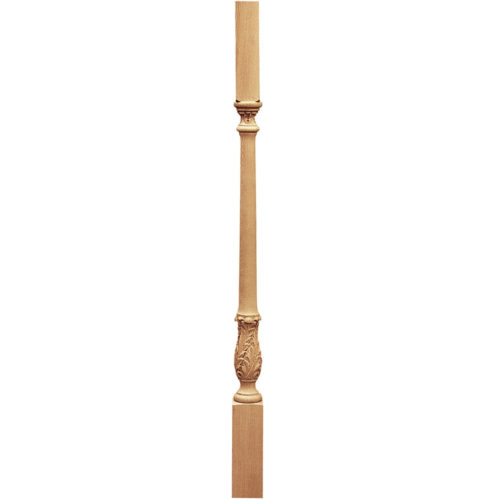A staircase is a major architectural feature of the house. A staircase can add considerable grace and elegance to your entry. The design of the staircase is complex. Choosing the right staircase parts is extremely important. Stair-parts have to be well proportioned to the overall staircase dimensions. The staircase’s height, width, and depth must be precisely connected and compatible with the space it occupies. The vertical measurement of each stair step should be compatible with the horizontal space of the stair where the footrests. The staircase appears more graceful if the horizontal plane is deep and wide.
A staircase can be bold and dramatic or simply functional. Often staircase acts as a focal point an can be aesthetically stimulating as well as serviceable. Today a lot of decorative staircase parts are available on the market. Most of the stair parts caring a dual value – they are decorative and functional at the same time. The staircase consist of the horizontal components called the tread, and the vertical parts called the riser. Decorative parts of the staircase are stair brackets, newel finials, stair rods, paneling, and other trim embellishments.
The ideal staircase should be beautiful and safe at the same time. In many old houses, the staircase is too steep; it has risers (the vertical part of the stairs) are more than 9 inches high. Most of the times during renovation such staircase has to be reconfigured. The staircase is one of the most regulated elements of the house, and any changes you make to the staircase or its parts must conform to the local building code. Everything from the steps and stairwell width to the size of the railing must meet strict specifications.
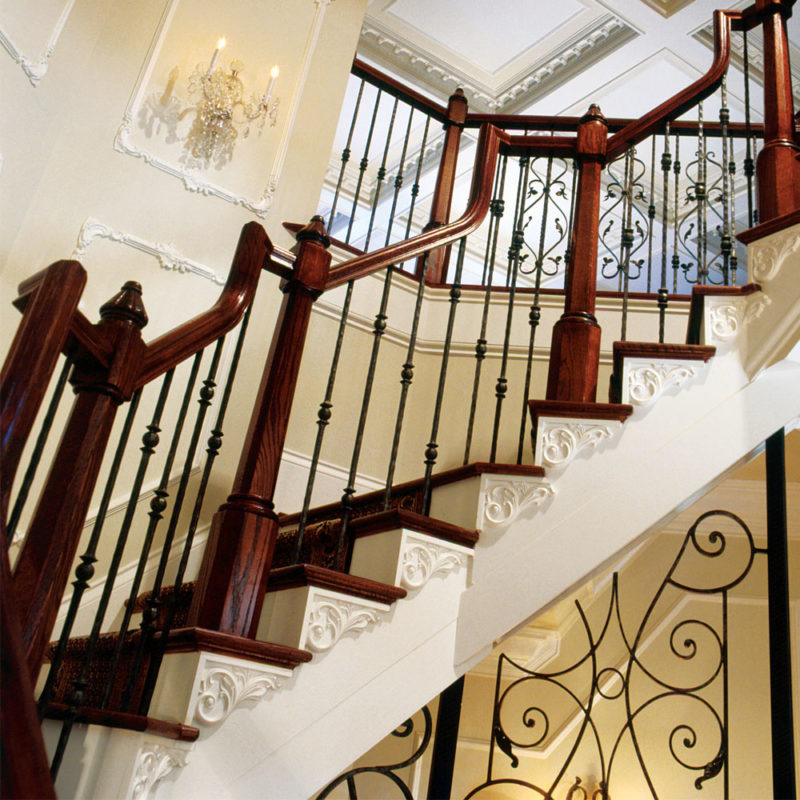
Changing a Staircase
Most cosmetic changes of the staircase won’t require a permit, but it’s a good idea to start your staircase planning process by getting a copy of the staircase code from the local building department. Ideally, the depth of the tread parts should accommodate the entire length of the foot (11 inches are generally used). Staircase riser parts should be no higher than 7 inches. Staircase steps should be consistent in size.
A person expects and needs each stair step of the staircase to be the same height and depth. Headroom clearance should be planned for the top and bottom of the staircase (6’8″ is considered a minimum clearance). The staircase treads and risers may be the most practical parts of a staircase, but they also have a significant impact on the staircase appearance. Traditional staircases usually have polished hardwood treads and hardwood or paint-grade risers. If not left bare, they typically receive a carpet runner, leaving the attractively finished edges of the threads exposed.
The steepness of the indoor staircase can vary by several inches, but six inches is average and comfortable stair height. Six-inch stair riser works well with a 12-inch deep stair tread (where your foot rests). Most people appreciate generous stair treads that not only look more graceful but allow the foot to rest fully.

Traditional Staircase Accents
If you live in an original eighteen-century house with a staircase that has narrow treads, you might want to refrain from altering it. After all, this staircase is an inherent part of the historical period. You can renew the old staircase by adding runner and refinishing the ends of the steps. Carpet staircase runners mainly offer the best of both worlds: the quiet, comfort, and sure footing of carpet stairs and natural wood beauty of finish stairs.
Runners are traditional staircase accents that add warmth and a finishing touch to a bare wooden staircase. Installing a runner is not difficult with most staircases but does require carpet-laying tools. Stair rods are popular traditional decorative parts for the staircase. They are available in a variety of styles and materials. Stair rod fits over the crease were each stair tread meets the bottom of the stair riser and are secured at the and by decorative brackets. In the past, stair rods were functional staircase parts; they were used to hold stair runners in place. Today they are purely decorative parts of the staircase.
As to the modern carpeted staircases, one of the most dramatic and easy staircase makeovers is turning a covered staircase version into a beautiful finish staircase by removing the carpet and adding new hardwood treads and riser panels. Replacing unfinished constriction grade steps with hardwood is an excellent do-it-yourself project, but it is not for all staircase types. It does not work with housed stringers, where the end of the treads are seated in grooves and are too difficult to remove. Also, if the balusters rest on the treads, replacing the treads involves replacing the balusters.
Staircase Balustrade
Staircase unit that includes banister, balusters, and newels called balustrade. The balustrade is the most decorative part of the staircase. The prominent post on the bottom of the staircase is called the starting newel.
Newel usually set on the first or second step of the staircase, generally wider than the other steps. Beautiful newels and balusters are important staircase parts; they add substance and elegance to the staircase and surrounding space. When the staircase banister curves outward, or curls around, at its base to conform to widening, curving steps (professional call this section curtail), the starting newel is referred to as an angular newel. Landing parts of the staircase also have newels.

Today, safety codes dictate how close together the spindles (balusters) holding up the handrail of a staircase (banister) must be. Check the code before you fabricate a new balustrade and choose your staircase parts accordingly. A staircase handrail (or banister) usually mounted at 34″ above the steps. Staircase balusters provide upright support for the handrail. Balusters should be placed close enough to prevent toddlers from falling through the supports.
Often as you walk in the house, the side of the staircase is one of the first things you see. An excellent way to embellish the sides of the staircase is to use decorative stair brackets.
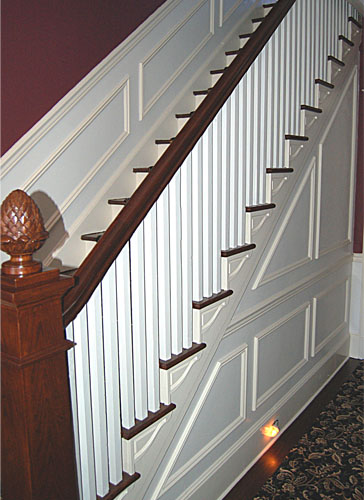
Dressing up the Staircase
Paneling is a popular way to dress up the staircase. A novel variation of the paneling staircase treatment involves using chair-rail to create a “shadow railing” on the staircase wall and panel molding to create panels below it.
A shadow railing is not a functional staircase railing, but merely projected trim-work that mirrors the lines of the staircase balustrade. To see an example of staircase makeover with us of molding and stair brackets click on following the link – staircase with stair brackets.
With some staircase configurations, you can also add a hardwood starting step to enhance the foot of the staircase. When added as an accent to the staircase, a starting step is a complete hardwood step that replaces the first riser and tread of a mitered-stringer staircase. Starting steps are wider than regular (48 inches or more wide). They create a kind of decorative platform suggestive of the grand staircase that widens toward the bottom. Often they are rounded on their exposed end. When the staircase has a newel, it is typically installed in the center of the starting step’s bulldoze end. The tread of most staircase steps has a projection called nosing, a curved molding that overhangs the riser and overlaps the tread. One of the most elegant uses of a starting step is as a base for a newel.

